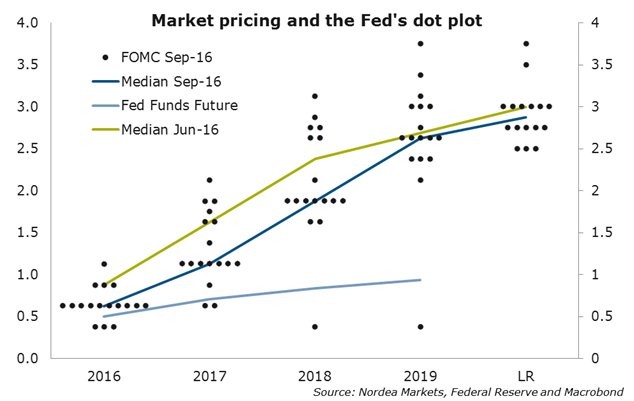After briefly topping at the last turn date of Feb 28, 2017 (link), market rallied yesterday on Federal Reserve's announcement.
Market Condition
Hence there are no significant headwinds in front of the stocks right now.
We remain long the stock market because Market Classification Model remains bullish, which turned bullish on stocks in July 2016 and has remained bullish ever since (2017 Investment Performance). However, it is critical to understand potential future turn dates.
According to latest Inflection Point Model re-run, stocks will likely experience turbulence in the first week of April. Following chart shows the IPM model output.
IPM Model turn date is scheduled for April 5 (+/- 4 days). Most likely, this will turn out to be another intermediate top, which will last till majority of companies start reporting their earnings in mid April. However, it will be sufficient enough to make bears out of many longs.
We will continue to evaluate the market conditions for any sell signals, as we approach this turn date. In the mean time, it seems like this rally could continue for another ~2 weeks.
If your interested in free e-mail list or in paid services like Market Classification Model, please fill-out the form below.
Market Condition
- During the correction since Feb 28, market did not generate any sell signals. In fact, it generated several buy readings from oversold perspective.
- At the same time, Sentiment as subsided in the past few weeks, which will provide fuel for this rally to continue.
- From a government perspective, they are busy with controversies and will not be able to influence the market.
- Furthermore, Dutch election results were positive for the overall geo-political situation
Hence there are no significant headwinds in front of the stocks right now.
We remain long the stock market because Market Classification Model remains bullish, which turned bullish on stocks in July 2016 and has remained bullish ever since (2017 Investment Performance). However, it is critical to understand potential future turn dates.
According to latest Inflection Point Model re-run, stocks will likely experience turbulence in the first week of April. Following chart shows the IPM model output.
We will continue to evaluate the market conditions for any sell signals, as we approach this turn date. In the mean time, it seems like this rally could continue for another ~2 weeks.
If your interested in free e-mail list or in paid services like Market Classification Model, please fill-out the form below.























